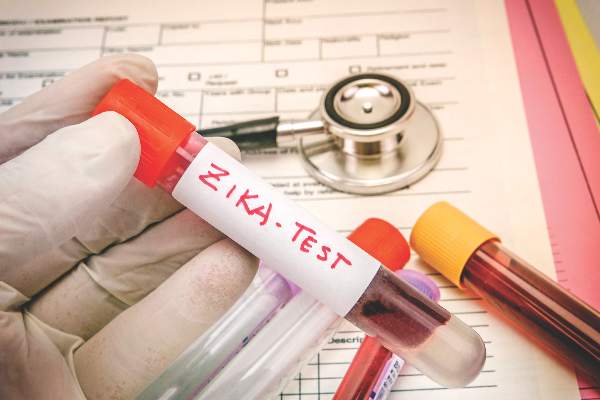MORBIDITY AND MORTALITY WEEKLY REPORT
A faster diagnostic tool for Zika virus infection than those currently used received approval by the Food and Drug Administration under an Emergency Use Authorization, the agency reported Friday, the same day the Centers for Disease Control and Prevention reported that 116 U.S. residents have tested positive for Zika as of Feb. 26.
The Trioplex Realtime RT-PCR Assay requires only a single test to differentiate current chikungunya, dengue or Zika infections instead of three separate tests. The CDC will start distributing the test to qualified domestic and international labs over the next two weeks, but U.S. hospitals and similar primary care settings will not have the test.
Nearly a quarter (24%) of the 116 cases reported by the CDC were diagnosed using reverse transcription-polymerase chain reaction (RT-PCR) to detect Zika RNA, and nearly all the remaining (76%) relied on detection of anti-Zika antibodies with ELISA serologic testing. Two cases were determined based on epidemiological links to a confirmed case and serologic evidence of an unspecified flavivirus infection. These cases do not include additional onesdiagnosed and reported from state and territorial departments with local lab testing.
“Zika virus disease should be considered in patients with acute onset of fever, rash, arthralgia or conjunctivitis who traveled to areas with ongoing transmission or had unprotected sex with someone who traveled to those areas and developed compatible symptoms within two weeks of returning,” said Dr. Paige Armstrong, of the Epidemic Intelligence Service at the CDC in Atlanta, and her associates ( MMWR 2016 March 18 ).
The researchers reported on all U.S. residents who received positive lab tests for Zika infection from the CDC between January 1, 2015, and February 26, 2016. Among the cases, from 33 states and Washington, D.C., one was an infant with microcephaly who contracted the virus congenitally, five had recently had sexual contact with someone who had traveled to an area where Zika was actively circulating, and 110 had traveled to a region active with Zika. Haiti, El Salvador, Colombia, Honduras and Guatemala comprised the most commonly visited countries among the cases.
Most infections of Zika, transmitted primarily by the Aedes aegypti mosquito, remain asymptomatic, and even those with the characteristic symptoms of rash, fever, arthralgia and nonpurulent conjunctivitis tend to have a mild illness. Nearly all (96%) of the 116 cases had at least two of these symptoms, and 65% had three or more. Among all the cases, 98% experienced a rash, 82% a fever, 66% joint pain, 57% headache, 55% myalgia and 37% conjunctivitis. Four were hospitalized, and none died.
“Until more is known about the effects of Zika virus infection on the developing fetus, pregnant women should postpone travel to areas where Zika virus transmission is ongoing,” Dr. Armstrong and associates wrote. “Pregnant women who develop a clinically compatible illness during or within two weeks of returning from an area with Zika virus transmission should be tested for Zika virus infection; testing may also be offered to asymptomatic pregnant women 2–12 weeks after travel to an area with active Zika transmission.”
The study was funded by the CDC, and the authors reported no disclosures.



